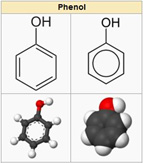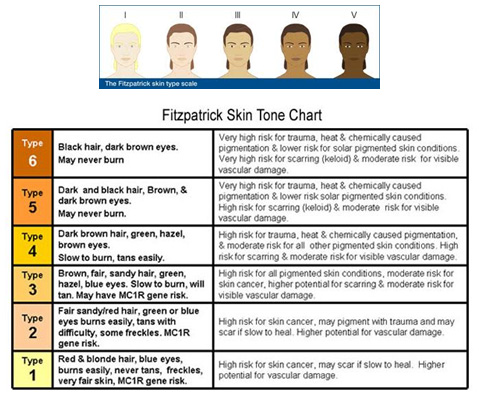
|
Message From the Phenols vs. Polyphenols: How Can I tell if My
Earn funding for VSI View Past Newsletter Issues VSI Medical and Scientific Advisory Committee |
|
Having trouble remembering your Logon ID or Password? Beneath the login field on the Community Page you'll find instructions to have them sent to you.
|
|
Online Email Contact Us Postal Mail Address Phone |

|
Dear Members and Friends of VSI,
All of us want to know if there are things we can do on our own to help our skin. One of the first steps in becoming emotionally strong in the face of vitiligo is self education. It is important to learn all that you can about staying healthy, both emotionally and physically, as well as learning about the traditional pharmaceutical and medical therapies that can help in controlling vitiligo.
One of the most frequent questions we receive is whether changing one's diet will help with vitiligo. Specific studies have identified certain foods that may be helpful based on their chemistry and what we know about vitiligo; however, few solid answers exist relative to a specific diet and vitiligo. Despite our extensive knowledge of food chemistry, most theories linking specific foods to their effects on human skin pigmentation are still anecdotal and/or speculative.
In this newsletter issue, we bring you information on research now underway on phenols, polyphenols and specific anti-oxidants that may shed more light on these dietary links, as well as the biology of vitiligo. Natural, dietary approaches to treating vitiligo understandably have great appeal, but until we learn more about the possible benefits of holistic concepts, a healthy, balanced diet may still be the best approach.
VSI is committed to advocating for access to the most effective vitiligo treatments and, ultimately, a permanent method of control. We welcome your questions and comments about treatment.
Sincerely,
Jackie Gardner
|
For best view, click Fall Newsletter to open in browser. |

Good for You and Which are Not"
Phenols are in you and around you. They are in the apples you eat, the dye you use for your hair, the cosmetics you use on your skin, and a myriad of other everyday products. They can help you live longer. They can also make you sick.
If you have vitiligo, they may have helped to trigger onset of the disease. If you are trying to repigment your skin, they may be able to help. Understanding which phenols to avoid and which may be helpful can be important to effectively controlling this skin disease.
 |
What is a phenol?
Phenols are common in the natural world, especially in plants. They number in the thousands, differing in chemical structure and function. Some of us can be exposed to them as industrial additives in laboratory processes or through the processing of chemicals, wood, and plastics. Many of us will come into contact with phenols through our use of everyday items such as hair dyes, photography chemicals, and household stain removers. |
People with vitiligo whose skin comes into contact with industrial or commercial phenolic compounds can develop what is termed "occupational vitiligo". Being aware of this potential trigger can help to minimize your risk of worsening of vitiligo. The various industrial chemicals and substances which may trigger the onset of vitiligo are listed in Table 1. Click here to view Table 1
| Polyphenols, a type of phenol compound primarily found in food, are currently being studied for their ability to facilitate repigmentation of the skin. Polyphenols are found, for example, in fruits such as apples, blackberries, blueberries, cantaloupe, cherries, cranberries, grapes, pears, plums, raspberries and strawberries, and vegetables such as broccoli, cabbage, celery, onion and parsley are rich in polyphenols. Red wine, chocolate, green tea, olive oil, bee pollen, honey and many grains are sources as well. (See "What's On Your Mind" column for additional information). |  |
They may be. Our studies in this area are just beginning. More high-quality studies need to be done. A published 2008 scientific review of clinical trials testing natural health product treatments for vitiligo concluded most published studies using these products were flawed. However, according to a 2010 dermatological scientific review of clinical trials using plants in skin disease treatment, three polyphenol plant studies offer promising leads.
 One such polyphenol-containing plant, the fern Polypodium leucotomos, has been reported to enhance the rate of repigmentation in vitiligo patients. A 2007 European study found that oral extracts of this antioxidant fern enhanced the effectiveness of narrow band ultraviolet B light (NB-UVB) in treating vitiligo. Fifty patients with vitiligo vulgaris randomly received 250 mg of oral P. leucotomos or placebo three times daily, combined with NB-UVB twice weekly for 25-28 weeks. Patients in the P. leucotomos group showed increased repigmentation in the head and neck area versus the placebo group. The P. leucotomos group experienced 50% repigmentation versus the 19% in the placebo group. The study's authors said this increased repigmentation effect may be more pronounced in light skin types (skin types 2 and 3).
One such polyphenol-containing plant, the fern Polypodium leucotomos, has been reported to enhance the rate of repigmentation in vitiligo patients. A 2007 European study found that oral extracts of this antioxidant fern enhanced the effectiveness of narrow band ultraviolet B light (NB-UVB) in treating vitiligo. Fifty patients with vitiligo vulgaris randomly received 250 mg of oral P. leucotomos or placebo three times daily, combined with NB-UVB twice weekly for 25-28 weeks. Patients in the P. leucotomos group showed increased repigmentation in the head and neck area versus the placebo group. The P. leucotomos group experienced 50% repigmentation versus the 19% in the placebo group. The study's authors said this increased repigmentation effect may be more pronounced in light skin types (skin types 2 and 3).

Another study in 2003 reported repigmentation in patients taking ginkgo biloba, a polyphenol commonly used in Chinese medicine. Oral administration of an extract of ginkgo biloba 40 mg three times daily over a 6-month period was effective in a double-blind, placebo-controlled trial in 52 patients with limited, slowly spreading vitiligo. Ginkgo biloba significantly induced cessation of active progression, and 10 of 38 patients in the vitiligo group, compared with 2 of 22 patients in the placebo group, showed marked to complete repigmentation. Currently, two additional clinical trials are being conducted to further evaluate the potential benefits of ginkgo biloba in treating vitiligo.
Another traditional Chinese medicine mixture (called xiaobai mixture) of 30 g of walnut, 10 g of red flowers, 30 g of black sesame, 30 g of black beans, 10 g Zhi Bei Fu Ping (duckweed), 10 g of Lu Lu Tong (sweetgum fruit, Liquidambaris fructus) and 5 plums was given to 74 vitiligo patients over a three-month period once daily and compared to a group treated with PUVA. The authors of this 2003 study reported that the therapeutic effect was better in the xiaobai mixture group than in the PUVA group.
Science suggests that melanocytes in those with vitiligo are genetically fragile and unable to tolerate or appropriately respond to oxidative stress. Phenolic compounds are believed to trigger or worsen vitiligo by killing the melanocytes in the skin through oxidative stress and causing an overload of hydrogen peroxide in the skin. Interestingly, it seems that the melanocytes of those not genetically predisposed to vitiligo are unaffected by these compounds.
Oxidative stress is an over-accumulation of reactive oxidants, also known as reactive oxygen species (ROS). ROS is made up of many different radicals, or organic molecules, which support a variety of biological processes. When they become unstable (free radicals) or in excess, tissue or cellular damage may occur. The purpose of these ROS (or radicals) during the inflammatory process is to kill or destroy invading microorganisms and/or to degrade damaged tissue structures. A low level of ROS routinely circulates in our bodies. Uncontrolled release of ROS is involved in the pathogenesis of a number of human skin disorders, including vitiligo.
Natural antioxidants in our bodies are believed to work by eliminating or minimizing the deleterious effects of oxidative stress. Scientists believe that an optimal balance must exist between ROS and antioxidants to promote good health.
Polyphenols are a type of antioxidant. Other types of antioxidants are also being tested in treating vitiligo, including those found naturally in the skin, which include glutathione (GSH), alpha-tocopherol or vitamin E, ascorbic acid or vitamin C, glutathione peroxidases, glutathione reductase, glutathione S-transferases GSTs), superoxide dismutases (SODS), catalase, and quinine reductase. The efficacy of these antioxidants, alone or in combination with phototherapy, have been reported with mixed or negative results. Some recent studies, however, are worth noting and may provide leads to further research.
A double-blind, placebo-controlled trial in 2007 testing these candidate natural antioxidants provides the first definitive evidence of the effectiveness of antioxidants in treating vitiligo, according to the study's authors. In this trial, the 28 patients who completed the study were given daily antioxidant supplementation referred to as an antioxidant pool (AP). This product, a commercially available drug in Europe (Lipoacid-combi), contains alpha-lipoic acid (50Mg), vitamin C (50mg), vitamin E (20 mg), polyunsaturated fatty acids (12%), and cysteine monohydrate (50 mg). The patients were given the antioxidant product in the form of two tablets daily for two months prior to beginning the NB-UVB therapy. The supplementation regimen continued during six months of twice-weekly NB-UVB. The antioxidants were found to increase the therapeutic efficacy of the NB-UVB phototherapy, with 47% of the patients obtaining over 75% repigmentation versus 18% in the placebo group.
 Additionally, the scientists found that taking the antioxidant supplementation prior to phototherapy reduced the chemical products of oxidative stress. They speculated that this move toward restoration of oxygen balance made the skin more susceptible and responsive to the effects of treatment. They concluded that antioxidant supplementation with NB-UVB therapy may prevent the progression of the disease as well as increase the effectiveness of NB-UVB. Both enhance the other's effectiveness since they work through different mechanisms. Further evaluations will be needed to establish whether the adjuvant treatment with antioxidants can reduce the rate of relapse in vitiligo.
Additionally, the scientists found that taking the antioxidant supplementation prior to phototherapy reduced the chemical products of oxidative stress. They speculated that this move toward restoration of oxygen balance made the skin more susceptible and responsive to the effects of treatment. They concluded that antioxidant supplementation with NB-UVB therapy may prevent the progression of the disease as well as increase the effectiveness of NB-UVB. Both enhance the other's effectiveness since they work through different mechanisms. Further evaluations will be needed to establish whether the adjuvant treatment with antioxidants can reduce the rate of relapse in vitiligo.
Another study done in 2009 reported similar positive results using oral vitamin E. Twenty-four patients with stable vitiligo were recruited and divided randomly in two groups. They were treated with NB-UVB plus oral vitamin E in group A and with NB-UVB only in group B. Twenty patients completed the study. Marked to excellent repigmentation was noted in 72.7% and 55.6% of the patients in group A and group B, respectively. The researchers concluded that oral vitamin E may represent a valuable adjuvant therapy, increasing the effectiveness of NB-UVB.
A variety of small-scale vitiligo cell culture, animal and human studies have provided evidence that antioxidants may be of benefit in treating vitiligo. However, no satisfactory agent has so far been found to reliably and consistently work in humans. Many of the human clinical trials testing antioxidants on vitiligo have been considered mixed in quality and results. Continuing work in this area is needed to definitely determine whether polyphenols and the other antioxidants can be effective agents in treating vitiligo.
The complexity of this research was highlighted in a 2005 Korean study of a combination of green tea extract (a polyphenol) with the antioxidants quercetin and folic acid in cell culture. The scientists tested several antioxidants, alone and in various combinations, in cell culture and found that a combination of the above three was most effective against the effects of oxidative stress. The authors concluded that the way antioxidants are combined may be just as important for study as the type of antioxidants being used.
Click here to view References for this article

|
Antioxidant Products
Numerous antioxidant products are sold over- the-counter, including those mentioned in this article. They are classified as a supplement rather than a drug and, therefore, are not approved by the Food and Drug Administration. Antioxidants can be harmful in the presence of certain medical conditions or other medications or if taken in excessive quantities. Anyone considering taking an antioxidant should consult their physician prior to using. Polypodium leucotomos - Dr. Charles Camisa, a well-known dermatologist, recommends Heliocare, one of the many brands of this extract that is available over the internet. Heliocare contains 240 mg of this fern extract plus green tea extract and beta-carotene. Dr. Camisa says Heliocare costs about a dollar per capsule, but prices vary, so he recommends shopping around. Dr. Camisa says he advises his narrow band or excimer laser patients to take one or two capsules of P. leucotomos extract daily to enhance repigmentation, especially if vitiligo involves the head and neck areas. (P. leucotomos has several uses, including sun protection, so the internet has various promotions for it). Ginkgo Biloba and Oral Vitamin E, C, A and Zinc and Selenium - These antioxidants are available in a wide variety of brands. They can be purchased over the internet or found in your local pharmacy, wholesale club, groceries or other retail outlets. Look for those especially that indicate on their label they are United States Pharmacopeia (USP)-verified. Note: The USP Dietary Supplement Verification Program is a voluntary testing and auditing program for pharmaceutical manufacturers. Available worldwide, the program verifies the quality, purity, and potency of medical or health products being sold to the consumer. The USP Verified Mark indicates the product (1) contains the ingredients listed on the label, in the declared potency and amounts; (2) does not contain harmful levels of specified contaminants; (3) will break down and release into the body within a specified amount of time; and (4) has been made according to Food and Drug Administration current good manufacturing practices using sanitary and well-controlled procedures. |

Treatment results will vary by person. Some people will begin to see results within 3 to 6 months. Others may not see results for 8 months. The rule of thumb is that you will need to allow at least 3 to 6 months before you begin to see results from ANY treatment. Additionally, you should expect to treat for up to two years or longer in order to see good results. If you try a treatment for 3 months and then quit because you saw no results, chances are you needed more time. It is vital to use any treatment consistently and correctly. If you don't use a treatment as directed by your physician, it can take much longer to work or it may not work at all.
For best results, how do I use light as a treatment? When using light such as sunlight or Narrow Band UVB (NB-UVB), the goal is to expose the depigmented area to the light source long enough so that you see a nice pink color within 12-18 hours after the light exposure. This is the same reaction you see anytime you expose your skin to sunlight. You never want to burn (turning red rather than pink) pigmented OR depigmented skin, as it is unhealthy for your skin and this type of trauma can actually cause vitiligo to spread or worsen.
 How can I tell if I am getting enough light? You should always begin conservatively so as not to burn, then increase your time slowly until you gain the desired effect. Always remember, pink is good- red is not! Within 24-36 hours, the pink should turn back to the normal depigmented color; then it is OK to treat again. Most doctors recommend treating with light around 3 days a week.
How can I tell if I am getting enough light? You should always begin conservatively so as not to burn, then increase your time slowly until you gain the desired effect. Always remember, pink is good- red is not! Within 24-36 hours, the pink should turn back to the normal depigmented color; then it is OK to treat again. Most doctors recommend treating with light around 3 days a week.
How long are NB-UVB treatment times? Beginning NB-UVB treatment times would be around 15- 20 seconds. If you do not see any pinking within 12 -18 hours, you can use NB-UVB again the next day and increase the time by 5-10 seconds and so on.  Once you reach a level where you get pink but do not burn and the color goes away within 24-36 hours, you can maintain that time as long as you are still achieving the pink. Some people will remain at the same level for weeks or months. Once you no longer see pink, you probably need to increase your time again. Always take care when increasing time that you do not increase too much. It is better to take an extra day to achieve the desired results than it is to risk burning.
Once you reach a level where you get pink but do not burn and the color goes away within 24-36 hours, you can maintain that time as long as you are still achieving the pink. Some people will remain at the same level for weeks or months. Once you no longer see pink, you probably need to increase your time again. Always take care when increasing time that you do not increase too much. It is better to take an extra day to achieve the desired results than it is to risk burning.
How long should I expose my skin if I am using sunlight to treat? That depends on several factors such as the time of year and your latitude (proximity to the sun). The closer to the equator you are, the stronger the rays. Sunlight generally takes a little longer exposure than NB-UVB because sunlight contains the full light spectrum rather than only the therapeutic rays of NB-UVB. As with NB-UVB, you need to begin conservatively in order not to risk burning. Depending upon the time of year and the climate, a general rule of thumb would be to begin with around 15 minutes of sun, increasing the time minimally as needed to maintain the therapeutic dose (getting pink).
 How can I tell if light treatment is working? One of the best ways to tell if light (or any treatment) is working is to begin with good photos of the areas you are treating. That is the most accurate way to follow your progress. With light (as well as any other treatment) you will need to be very consistent with your treatment in order to expect positive results. If you are using light at a therapeutic dose (getting pink) at least three days a week, every week, within 3 to 6 months you should begin to see some signs of repigmentation.
How can I tell if light treatment is working? One of the best ways to tell if light (or any treatment) is working is to begin with good photos of the areas you are treating. That is the most accurate way to follow your progress. With light (as well as any other treatment) you will need to be very consistent with your treatment in order to expect positive results. If you are using light at a therapeutic dose (getting pink) at least three days a week, every week, within 3 to 6 months you should begin to see some signs of repigmentation.
What will the repigmentation look like? Some areas will begin regaining normal skin color by closing in from the outside edges so that the depigmented area slowly gets smaller and smaller until it is fully repigmented. Some areas will instead begin to get freckles inside the depigmented area. These freckles begin as very small dots and grow in size until they are islands that fuse together, filling in the depigmented area. Some areas will be a combination of both.
Some people experience a bit of hyper-pigmentation (darker than normal skin color) when they begin repigmenting. The new freckles themselves or the outside edges of the depigmented area may be initially show this hyperpigmentation. This ordinarily subsides before too long and the color will even out to the normal skin tone.
How long will it take to see results from a topical (ointment or cream) treatment? Topical treatments alone usually take longer to produce results than a topical combined with light. With a topical treatment alone, results might not be evident for 8 months or longer. Topicals combined with light generally produce results even faster than with light alone. Once again, it is very important for topical treatments to be used as your doctor prescribes, with regard to frequency of treatment, method of application and how long the topical should be left on prior to washing.
Click here for information on - Home Phototherapy, Supplements and Cosmetic Options

By
April Mitchell

| Going to Camp Discovery seemed like a good opportunity to be with other kids with skin disorders and to be somewhat of a role model to them. When I went to vitiligo conferences when I was younger, the older girls would hang out with me and tell me that having vitiligo would be okay. They told me that I'd make friends and I didn't have to let my vitiligo stop me from doing what I wanted to do. This inspired me to go to camp to now share my wisdom the same way they shared with me. I'd had bad experiences with other camps, so this could be my chance to change that and make sure these kids all had a good time. |
|
The four days I got to spend with the campers were filled to the brim with fun activities.  First, the kids arrived and I got to find out which campers I'd be spending my week with. I had 2 kids in my group with vitiligo and 5 other kids with different skin disorders. One of the little girls looked just like I did when I was her age. Before the kids could even unpack, we had to rush into the dining hall for our first activity. From then on, our days were packed with horseback riding, arts & crafts, trust exercises, water balloon tosses, waterfront time at the lake, fun games, a talent show and a dance. At the talent show, there was a wide variety of interesting and amusing talents. For example, one of the little girls could put her legs all the way behind her head, and another little boy could turn himself into a human pretzel. They ended up going to the dance together and talked about having very flexible children one day. At waterfront, the campers had a great time sinking their counselors in canoes and going tubing in the lake. The camp staff did a great job of making the kids and the counselors enjoy their time at Camp Discovery. We had a themed dinner where the staff all dressed up like cavemen, served up mashed potatoes and chicken legs, and would come around to each table, grunting, trying to pick fake bugs out of the kids' hair and eating our mashed potatoes with our bare hands. The kids could barely eat, they were laughing so hard.
First, the kids arrived and I got to find out which campers I'd be spending my week with. I had 2 kids in my group with vitiligo and 5 other kids with different skin disorders. One of the little girls looked just like I did when I was her age. Before the kids could even unpack, we had to rush into the dining hall for our first activity. From then on, our days were packed with horseback riding, arts & crafts, trust exercises, water balloon tosses, waterfront time at the lake, fun games, a talent show and a dance. At the talent show, there was a wide variety of interesting and amusing talents. For example, one of the little girls could put her legs all the way behind her head, and another little boy could turn himself into a human pretzel. They ended up going to the dance together and talked about having very flexible children one day. At waterfront, the campers had a great time sinking their counselors in canoes and going tubing in the lake. The camp staff did a great job of making the kids and the counselors enjoy their time at Camp Discovery. We had a themed dinner where the staff all dressed up like cavemen, served up mashed potatoes and chicken legs, and would come around to each table, grunting, trying to pick fake bugs out of the kids' hair and eating our mashed potatoes with our bare hands. The kids could barely eat, they were laughing so hard.
I went into Camp Discovery thinking that I would be a role model for other kids. When I left though, I realized that they had been role models for me. There were a few kids with disorders much more severe and painful than vitiligo that could have chosen to sulk and complain, but they chose to stay positive and cheerful. I could see the kids with positive attitudes having a really fun time, getting so much out of the camp, while the kids with more negative attitudes didn't want to participate as much, and I could see that they didn't have as good of a time. This reinforced my belief that a positive attitude can take you so much further, no matter what the situation may be. These kids didn't let their condition rule how their life was going to go.
At first I was apprehensive because I didn't know if I would know the right thing to say if I didn't understand someone else's skin condition, but Camp Discovery is a place for these kids to get away from being "different" and just have an opportunity to hang out with other kids and have fun.  It turns out the camp wasn't about focusing on the skin disorders. It was about giving the kids a place to get away from even having to think about it. I was also anxious about going all the way to Minnesota to be with a group of people I had never met before. I wasn't sure what I was in for.
It turns out the camp wasn't about focusing on the skin disorders. It was about giving the kids a place to get away from even having to think about it. I was also anxious about going all the way to Minnesota to be with a group of people I had never met before. I wasn't sure what I was in for.  But right after meeting all the kids, I was glad that I made the decision to go. I can't wait to go back next year.
But right after meeting all the kids, I was glad that I made the decision to go. I can't wait to go back next year.
Youth Support Volunteer with VSI.

|
Ongoing vitiligo research is showing great promise, as researchers continue genetic analysis into the causes of vitiligo aimed at the development of new and better treatments and even prevention. A variety of technical advances, such as gene mapping and cloning, has permitted relatively rapid advances in knowledge of melanocytes at the cellular and molecular levels. Currently, research is focused on determining the causes of the disease, including possible genetic markers. In order for vitiligo research to be conducted, volunteers are needed. Patients make an important contribution to medical science by helping doctors learn more about vitiligo. Vitiligo Support International plays a critical and ongoing role in supporting vitiligo research by helping to recruit participants for clinical trials and studies. Without patient volunteers, there will be no advances. Please take a careful look at the research opportunities listed below. If you qualify and have not yet participated, please do your part in advancing research now. |
We need your participation especially - both minority patients and minority "controls" (non-blood relatives without vitiligo). Your personal information, by law, will be kept private and will not be sold or disclosed. To date, we have had to rely on Caucasians for our studies as they are the only group that have volunteered to participate in numbers great enough to study. Through your participation, you will help to ensure that future discoveries and treatments will apply to minority groups as well.
If you are a Caucasian (white) or non-Caucasian (non white) with vitiligo, your participation as a research volunteer is vitally needed to help identify the genes linked to vitiligo. Scientists with the international VitGene Consortium project spanning 18 countries are working to understand the biology of vitiligo in order that more effective vitiligo treatments can be designed. Patient volunteers of USA Hispanic/Latino, African American, and Indian/Pakistani of subcontinent origin are especially needed. Complete the questionnaire below then email directly to Dr Spritz using the email address provided at the end of the questionnaire. Join with us to work for a vitiligo-free future!
Henry W. Lim, M.D., Professor and Director
Multicultural Dermatology Center, Henry Ford Hospital
Individuals with vitiligo develop milk-white patches of skin due to loss of the skin pigment cells (melanocytes) in these areas. Skin transplantation can be an effective treatment option for vitiligo patients for a specific group of patients. One particular skin transplantation technique, the melanocyte-keratinocyte transplantation procedure (MKTP) has been used successfully in Sweden, India and Saudi Arabia for more than 13 years.
In the MKTP, melanocytes are taken from a person's normal skin and then transferred to the vitiligo patches. The hope is that melanocytes will grow in this new location and the skin color may be restored. This procedure can be performed on an outpatient basis and patients can resume most normal activities immediately after the procedure.
We are performing this procedure in the Henry Ford Hospital (HFH) Dermatology Clinic in a clinical trial in order to see if we can achieve the same success that has been experienced in other parts of the world using this technique. This procedure is only appropriate for patients whose vitiligo has not worsened in the past six months. People who develop vitiligo or thick scars (keloids) on parts of the skin which are scratched or cut should not undergo this procedure. Study participants would have to be able to come to the HFH dermatology clinic in Detroit, Michigan 7 times in 12 months. Further study requirements can be discussed by contacting the study doctors.
For more information please contact Dr. Marsha Henderson at 313-916-6964 or [email protected]
Henry W. Lim, M.D., Professor and Director,
Multicultural Dermatology Center, Henry Ford Hospital
Though there are many different treatments available for vitiligo, there are none that are effective in all patients. We are performing a study comparing the genes of patients with vitiligo to those without the disorder in order to uncover targets for new treatments.
We will be collecting blood samples from vitiligo patients and healthy adults without the disease. We will perform testing to evaluate the genes that are different between the 2 groups as well as determining what these genes do. We are seeking 500 volunteers with vitiligo and 500 healthy controls for this important study. Participants would have to come to the Henry Ford Hospital Dermatology Clinic in Detroit, Michigan for a single visit and they will be compensated for their time.
For more information please contact Dr. Marsha Henderson at 313-916-6964 or [email protected]
Wherever you live, at Loyola University Chicago we want to hear about your case of vitiligo. This helps us direct our research, and to find support for our current thoughts on progressive depigmentation. The questionnaire should take between 5 and 10 minutes to complete. Please complete the attached form and send to the email address below to have the results included in our database. We intend to publish the data once ample questionnaires have been returned to us. Thank you for your contribution.
I. Caroline Le Poole Ph.D.
Associate Professor of Pathology
Loyola University Medical Center
email: [email protected]

|
If you are a technical expert on either of these programs and would be interested in volunteering your knowledge and time, we'd like to talk to you. Please contact VSI at [email protected] |


- Are there foods I should avoid?
At this time, there is not a specific diet that we know will promote repigmentation or protect against vitiligo. However, researchers have speculated from cell culture studies as to the value of certain foods for people with vitiligo. For example, blueberries and pears, foods containing anti-oxidant polyphenols, have been identified as posing a possible risk as they are also high in natural hydroquinone (a depigmenting agent).
Foods containing tannin (a type of polyphenol) have also been recommended by one group of scientists to be avoided by people with vitiligo. The tannin-containing foods they recommended be avoided or minimized included mango, cashew, pistachio, oak, cassava, areca nut, red chillies, cherry, raspberry, cranberry, blackberry and tea. These same scientists recommended that vitiligo patients avoid omega-6 lipids and vegetable oil. They speculated that the high phenol and tannin content of the foods widely consumed in India could explain why there is such a high incidence of vitiligo in that country. (reference below)
- Are there foods that are better for people with vitiligo?
Scientists have speculated as to the possible benefits that could come from foods containing polyphenols, a type of anti-oxidant. Onions and apples have been recommended as they are rich in quercetin, a polyphenol that has been shown in cell culture to protect against the toxic effects of hydrogen peroxide, a chemical found in excess amounts in vitiligo-involved skin. Crimini mushrooms, whey, and foods containing Omega-3 fatty acids have also been recommended. (reference below)
However, these recommendations are based on theory and not human trials. Specific foods and anti-oxidants are being tested in humans, but we are in the beginning phase of this type of work. This is a difficult and challenging area of study as there are thousands of different polyphenols with differing chemical structures and functions in a wide array of foods. A large number of individual phenolic compounds may occur even in a single food, making it difficult to identify which compounds are contributing what effects. The significant variations in polyphenol content such as in various brands of tea may also explain the inconsistencies in studies of the beneficial health effects of polyphenol antioxidants of green tea blends.
There is also lack of agreement as to how polyphenols are absorbed in the body. Studies to date in humans have not been able to confirm that polyphenols in food are absorbed by the human body, at least to any significant degree. One recent study of apple polyphenols failed to reproduce the anti-oxidant effect of apple polyphenols in humans that were observed in vitro (in cell culture). (reference below) Furthermore, caution is recommended in attempting diets depending largely on dietary supplements since the quality and concentrations of beneficial chemicals in some commercial products is subject to question.
Previously-mentioned preliminary studies that have been conducted in recent years are encouraging and more studies are underway, though at this time there are no definitive answers as to the precise foods or antioxidants that will work to repigment the skin or protect against vitiligo. Hopefully, we will learn much more in the immediate years ahead. Meanwhile, personal diet experimentation under the advice of a physician could perhaps be beneficial if you suspect a connection between your skin and what you eat.
- How can I avoid phenols in everyday products that I may purchase?
Phenols can be found in many everyday products. Hair coloring products, which are frequently discussed on VSI's message boards, can contain phenols and are of special concern. "Good Guide" provides lists of products, including hair coloring products, that contain phenols and those that don't. Click on www.goodguide.com/ingredients/116958-phenol to read more about phenol-containing products. We welcome hearing from any of our members about the existence of any other lists.
References
Namazi MR, Chee Leoh GOH. Vitiligo and diet: a theoretical molecular approach with practical implications. Indian Journal of Dermatology and Venereology and Leprology. 2009. 75(2):116-118.
Lotito SB, Frei B (Jan 2004) "Relevance of apple polyphenols as antioxidants in human plasma: contrasting in vitro and in vivo effects". Free Radic Biol Med 36(2):201-211.

Amazon.com has all kinds of items in addition to books. As long as shopping is done through this link, Amazon.com, or from the Amazon box on our Community Home Page, Amazon returns a portion of the sale to VSI. The more items members buy, the higher the percentage!
Our Vitiligo Library and Store is also powered by Amazon. It contains books, articles and products for those with vitiligo.
Our other program is iGive.com. The iGive shopping mall has over 700 stores where you can shop and VSI gets a percentage. Let friends and family know about iGive, so they can support VSI, too. You do have to register for iGive. Once you've registered, you can either shop directly through their "mall" on iGive's website or by downloading their toolbar, which makes it even easier. iGive also has a search function powered by Yahoo at isearchigive.com that earns VSI a penny per search. The power of numbers makes this also an effective way to support VSI.

|
You Can Make a Difference Today, for Someone in the Vitiligo Community There is no other source available that offers the comprehensive vitiligo education and patient support as VSI By making a donation to VSI as a Supporting Member; your gift will make a difference in the life of another person living with vitiligo. Over 100,000 people with vitiligo contacted VSI last year for help. We respond daily to hundreds of people coming to us for information and support. As we depend on donations from the public to serve vitiligo patients, your gift is critically needed. When you join as a Supporting Member, you will have the satisfaction of knowing you are helping others whose lives have been affected by vitiligo. You will also gain additional Supporting Member Benefits. If you are already a Supporting Member, an additional gift is welcome and gratefully appreciated. Thank you for your support and for enabling us to provide critically-needed services to this community. |
To be removed from the Vitiligo Support Newsletter email list, please click here.
